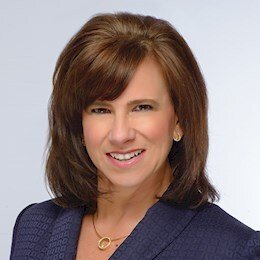One of the common pitfalls of Advanced Asset Management (AAM) is jumping straight into implementation. Organizations recognize they are behind the curve and want to charge headlong into new technology that promises to optimize cost and performance. However, the rush of excitement around a new tool can blind you to strategic gaps.
At the Utility Management Conference this year, I will be joining some team members to facilitate a workshop for developing formalized Strategic Asset Management Plans (SAMP) which can significantly accelerate your journey to achieving an AAM Program. The workshop includes a maturity self-assessment that provides an honest look at where your organization stands related to an AAM best practice framework and asks key questions such as:
Does the organization have a formal process in place to undertake strategic planning for asset management?
AAM is not a tool or process update. It’s a way of working that consistently evolves to meet new challenges. Rushing into the solution selection and implementation process too early might stagnate progress down in the line. The real accelerator for achieving AAM is a sound strategy. Documenting goals, objectives, policy, governance and workforce-focused aspects such as competencies and training will support continuous improvement.
Continuous is the operative word here. Plans fall apart when we add a new tool, dust off our hands, and consider the job done. You must track performance related to AAM goals and objectives and build in flexibility to make changes as you learn what works and what doesn’t. The cost and effort of adopting new solutions can be immense, and locking the organization into a set path before you the journey begins will only compound costly challenges as time wears on.
Is there a formal process for making decisions related to asset replacement, rehabilitation or repair?
Historic capital planning around asset management and investment decisions focused on the upfront capital expenditure (CAPEX) costs. But an anyone who’s worked at a utility knows, the operational expenditures (OPEX) can have the same impact – if not more so – on resources. As we detailed in Realizing the value of change with AAM, OPEX costs (such as operations and maintenance labor, supplies, and energy) can account for 75% to 85% of total lifecycle costs. Creating a formalized process using a total expenditure (TOTEX) approach that combines CAPEX and OPEX provides opportunity for minimizing spend.
Similarly, an over-reliance on historical industry standards for replacement schedules limits how much value organizations draw from an asset. Real-time data might reveal that an asset “due for replacement” is operating fine, while another that’s expected to last is on the verge of a costly breakdown. There is no one-size-fits-all approach to a certain asset, let alone your entire collection of assets, so prioritizing internal data over industry standards will provide clearer insights into managing operations and maintenance costs.
Your organization’s standards must include guidance for monitoring performance and applying data-driven decision-making. Without a formal process around how and when to act on data insights, the organization might be stuck on its heels when an asset needs to be repaired or replaced.
Does the organization have a strategy for resourcing its asset management activities?
Although traditional asset management programs have been focused solely on managing equipment, people are also one of the most important assets at the utility and contribute on a daily basis to the overall success of an AAM Program. Therefore, considering how people factor into your plan will be crucial. Some utilities have an asset manager in the organization, but the truth is that successful AAM involves the entire utility. Defining formalized roles and responsibilities, reporting structures, and change management plans accelerates progress when you add a new tool or update operations. This might include adding data scientists and analysts (or, training on those skills in-house) to unlock the full potential of digitally enabled asset management.
At times, it’s as simple as getting everybody on the same page. The term “asset management” gained popularity over the past decade, but it’s not like we weren’t managing assets beforehand. Documenting the workforce’s role in the strategy ensures everyone is combining strengths to work toward a common goal in an efficient manner.
Take the assessment to see where you stand
I hope you can join us on at the Utility Management Conference on February 21 for a session where we’ll dive into the full assessment alongside a few other exercises designed to build a formalized strategy to accelerate your AAM journey. If you can’t make it – or if you just can’t wait to get started – take the Global Asset Management Maturity Assessment today.






